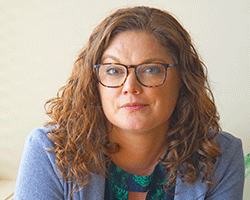
Breaking Banks, the No. 1 fintech podcast in the world, doesn’t have a marketing budget.
“We spend zero dollars on marketing,” said Jason Henrichs, who often hosts Breaking Banks as well as his own podcast, Fintech5, and is co-founder of digital-only PerkStreet Financial and founder/managing director of Chicago-based Fintech Forge.
So, how does a podcast that boasts 6.5 million listeners grow without spending big on marketing? Word of mouth, said Henrichs. “Your No. 1 way to actually acquire a listener who’s going to stick around … is to create content that provokes people to have a conversation about it and therefore share it … if you’re not getting that thought provoking conversation started and making it easy for them to share, it doesn’t matter how much media and banner ads and promotions appear at the top of [internet radio service] Stitcher and others, you’re just not going to grow the base because those are not going to be the listeners who stick.”
Creating relevant content is about more than combing the headlines, Henrichs insisted. You need to know your audience and understand what topics and ideas resonate with it. You also have to stop acting like a bank. Speaking recently with a banking team that is in the process of creating a podcast, Henrichs noted that the team was “talking like you’re bank.” When they inevitably replied that, well, they were a bank, he commented, “But your customers don’t care.”
Instead of creating sound bites highlighting various products and services, banks seeking to reach customers through audio content should embed financial products into an examination of a customer’s bigger journey. Anything else, Henrichs believes, is missing the point.
He recalled a campaign PerkStreet ran that tied its cashback rewards debit card program to Elf on the Shelf. “We are probably the only bank that has ever acquired checking accounts by writing about Elf on the Shelf,” Henrichs joked. However, the content was backed by research. A survey of PerkStreet customers revealed that most customers were using their cashback rewards to fund holiday spending. (A Disney vacation was No. 2.) The firm married that fact with the intense competition on Pinterest surrounding Elf on the Shelf, and voila: “It was so on point with what our customers cared about, they were subscribing to the rest of our content because they found it actually added utility to their lives. With that brand credibility, it led them to want to engage with you fully as a customer.
“We find the same thing on Breaking Banks. It can’t just be thought provoking; it has to have utility associated with it. That’s how you get people coming back again and again.”
Beware, though. While Breaking Banks may not “market,” it does spend a lot of time engaging and promoting its guests and episodes through various social media channels. For the global podcast, Twitter and LinkedIn work best, but Henrichs suggested that banks need to examine who their customers are and which social media channels they “live” on before focusing their attention on Facebook rather than Twitter or LinkedIn over Instagram.
“Who is the audience is the problem you’re solving for. Where are they, and who are you actually trying to get them to share it with?”
Henrichs was also upfront about the amount of time that goes into producing a high-quality podcast. Based on his experiences with Breaking Banks and Fintech5, he estimated it make take as much as three to five times the run-time of a podcast to record and produce the show, and he believes the amount of time spent promoting the show and engaging with listeners is probably equal to that.
Learning from your metrics is also important, and while Henrichs lamented there is no easy way to compile numbers on downloads, streaming listens, shares, etc. from the various podcast listening platforms, he’s confident knowing what your listeners are connecting with most is key to growing your audience.
“We’ve started paying much more attention to which shows are the most shared and have the longest tail-in listenership,” he said. “People shared those because they found value in them, something worth discussing that they wanted others to see, and those are the types of shows we’re going to lean into.”
